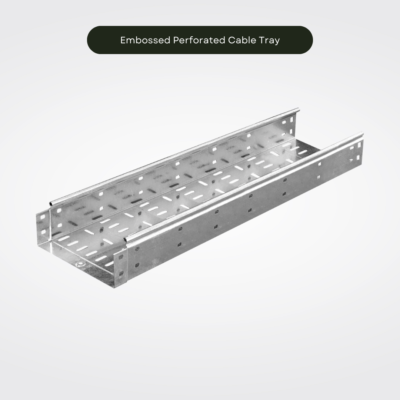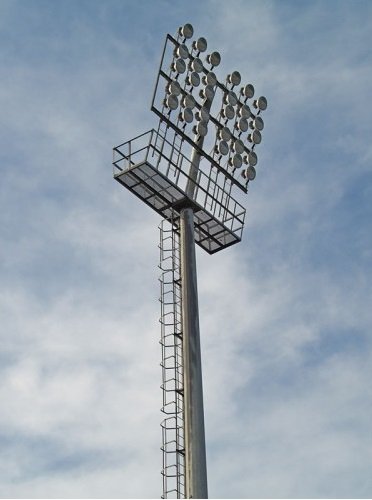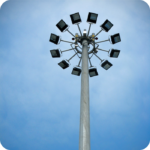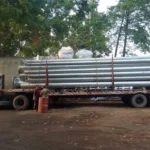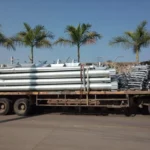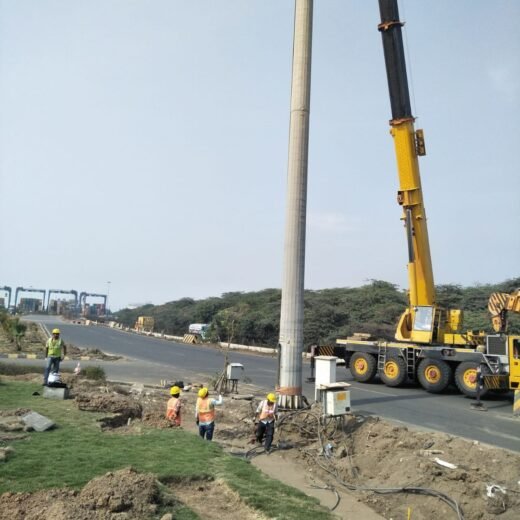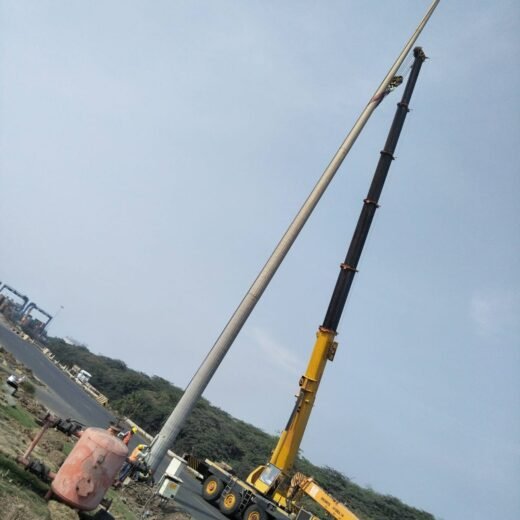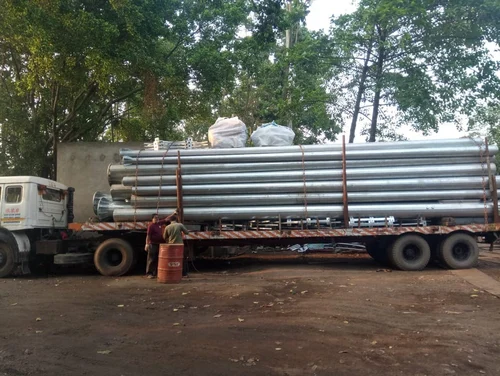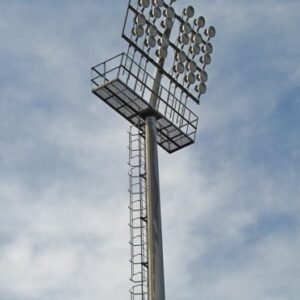Overview: High mast poles are tall lighting structures designed to provide wide-area illumination, enhancing visibility and safety in various large-scale outdoor environments. These poles are commonly used in areas such as highways, sports complexes, airports, large parking lots, industrial zones, and ports.
Features:
- Height and Structure:
- High mast poles typically range from 12 to 60 meters (40 to 197 feet) in height.
- Constructed from durable materials like galvanized steel to withstand harsh weather conditions and ensure longevity.
- Designed with a tapering structure to provide stability and reduce wind resistance.
- Lighting Efficiency:
- Equipped with multiple high-intensity discharge (HID) or LED floodlights to deliver uniform and powerful illumination.
- Lights are arranged in a circular or symmetrical pattern on a ring or platform at the top of the pole.
- Adjustable lighting angles for targeted illumination to minimize shadows and dark spots.
- Maintenance and Accessibility:
- Features a lowering system, such as a winch or pulley mechanism, allowing the lighting ring to be easily lowered to ground level for maintenance.
- Some models include built-in safety features like fall arrest systems and locking mechanisms for added security during servicing.
- Applications:
- Highways and Interchanges: Provides bright, even lighting to improve road safety and reduce accidents during nighttime driving.
- Sports Complexes: Ensures well-lit fields and arenas for both players and spectators, enhancing the overall experience.
- Airports: Illuminates runways, taxiways, and aprons, facilitating safe aircraft operations during low-light conditions.
- Industrial Areas: Improves visibility in loading docks, storage yards, and work zones, boosting productivity and safety.
- Ports and Harbors: Enhances visibility for docking, loading, and unloading operations, supporting efficient maritime activities.
- Customization Options:
- Available in various heights and designs to meet specific project requirements.
- Options for different lighting technologies, including energy-efficient LEDs, to suit environmental and economic considerations.
- Customizable finishes and coatings to match the aesthetic and functional needs of the installation site.


